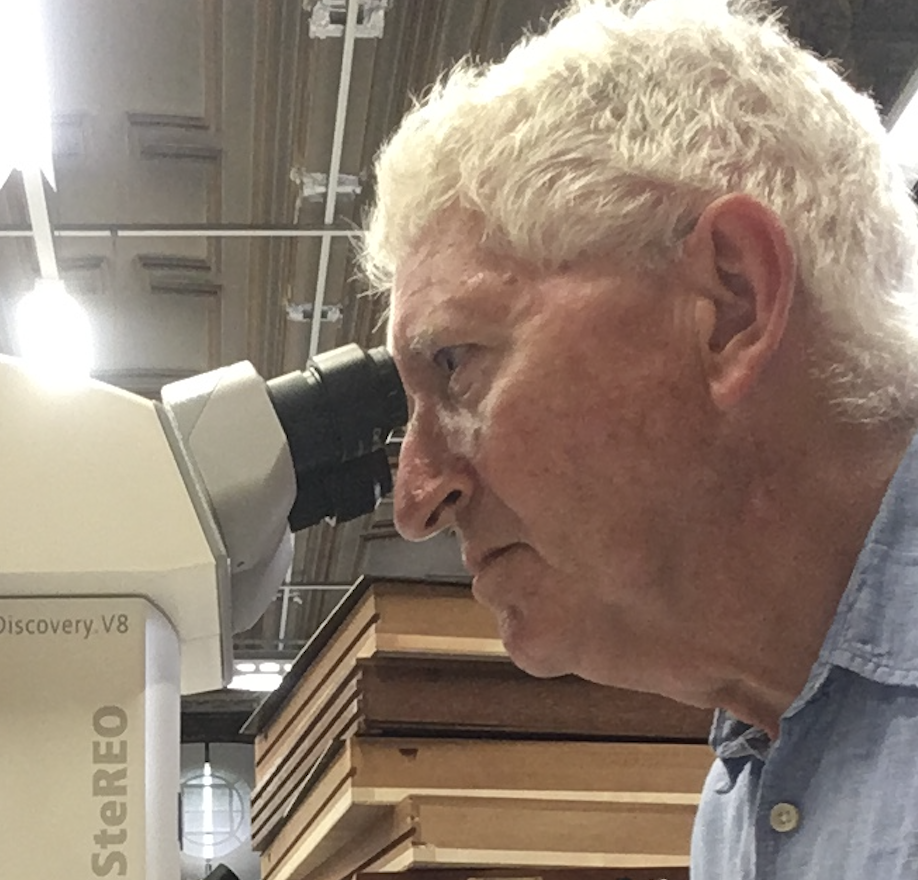Lichen offer food and shelter to a wide variety of organisms. They are excellent at measuring air quality and ecological value, and they are beautiful to look at. But not many of us know what they are, or how to differentiate one from the other. They're often mistaken for moss, growing as they do in similar environments. But technically, lichen is not even a plant. Read on to discover how this incredible natural wonder comes to be.
Interested in fungi? Check out our British wild mushroom and fungi guide: how to identify and where to find.
What is lichen?
Lichens are not plants, and neither are they single organisms. They are bizarre mixed organisms in a mutual co-operation: half-fungi, half-algae, and sometimes home to cyanobacteria too.
They are barely understood, but this much we know: the alga or bacterium produces simple sugars from photosynthesis and the fungus creates a structural matrix, the thallus, in which to house its powerhouse ‘guest’. The thallus absorbs water from the atmosphere so lichens can grow on extreme, virtually water-free substrates, such as bare rock, tree trunks, brick and stone walls. They can also survive severe desiccation by becoming metabolically inactive.
Can you spot these 8 winter woodland mysteries?
Next time you walk through a forest in winter, take time to pause and examine the nearest rotting log, the branches above you, the leaf-litter at your feet, and you’ll be rewarded with a hidden beauty visible only to those of us who stop long enough to see it.
Scarlet elf cups./Credit: Getty
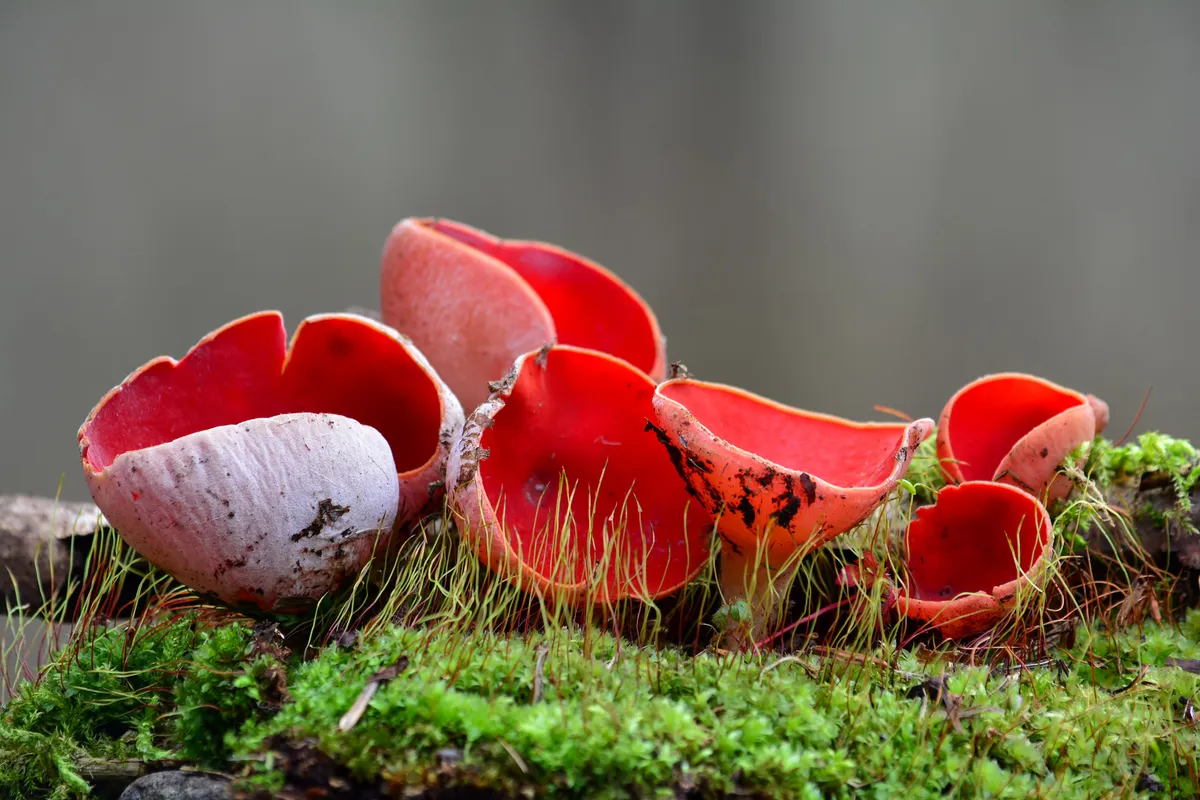
What is fungi?
Fungi refers to any of a group of spore-producing organisms that feed on organic matter, such as mould, yeast, nemotodes and compost. Fungi have a knack for symbiotic relationships, such as when they colonise the root system of a plant and provide it with the ability to absorb more water and nutrients, in exchange for feeding it some of the carbohydrates formed through photosynthesis.
In the case of Lichen, the fungi seems to provide the facility for the algae to grow.
Learn more about lichen with Richard Jones’ guide to eight of the most common.
Eight lichens to look out for in the UK
1. White lichen (Diploicia canescens)
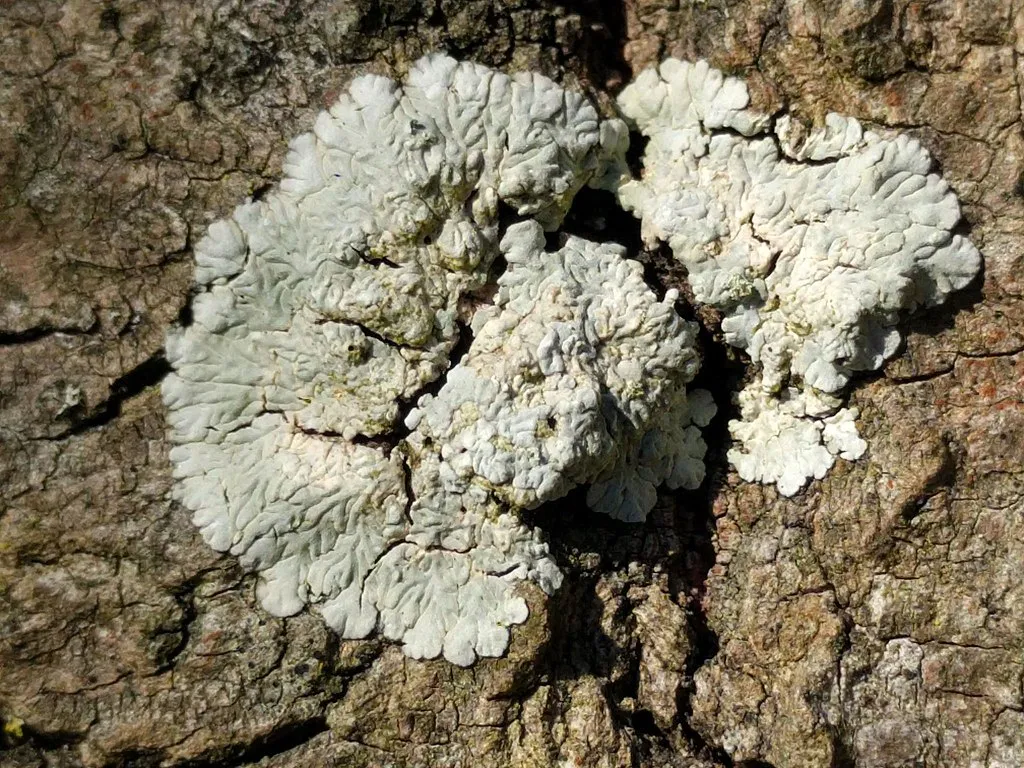
Pale grey to brilliant white, rounded or irregular-oval encrustation to 6cm with long overlapping lobes at the margins. The centre breaks out in powdery pale greenish white floury soralia (reproductive structures), 1–5mm. Found on trees, walls and rocks in lowland England and Wales, coastal Scotland and scattered in Ireland.
2. Map lichen (Rhizocarpon geographicum)

Strong yellow-to-pale-green encrusted rosette, up to 15cm in diameter, with a distinctive crackled appearance and small (1–3mm across) black apothecia scattered all over. An upland species, usually found on exposed hard granite and silica rock, it’s common in Scotland, Wales and the West Country, more sprinkled in England and Ireland.
3. Oak moss (Evernia prunastri)
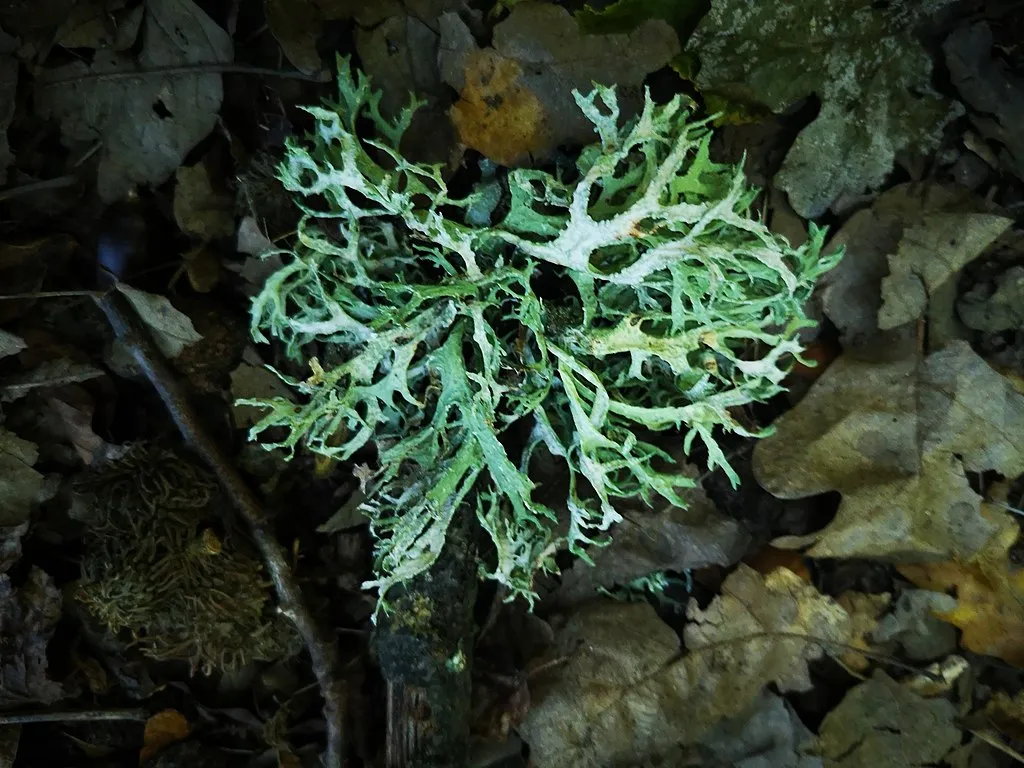
Thallus-forming, bushy, branching, strap-like tufts of pale greenish-grey clusters with miniature antlers hanging down. The underside is paler, sometimes almost white. It grows on the bark of broad-leaved trees, and is particularly obvious on twigs and small stems, giving a mossy appearance. Found throughout the British Isles.
4. Black-spot lichen (Physcia aipolia)
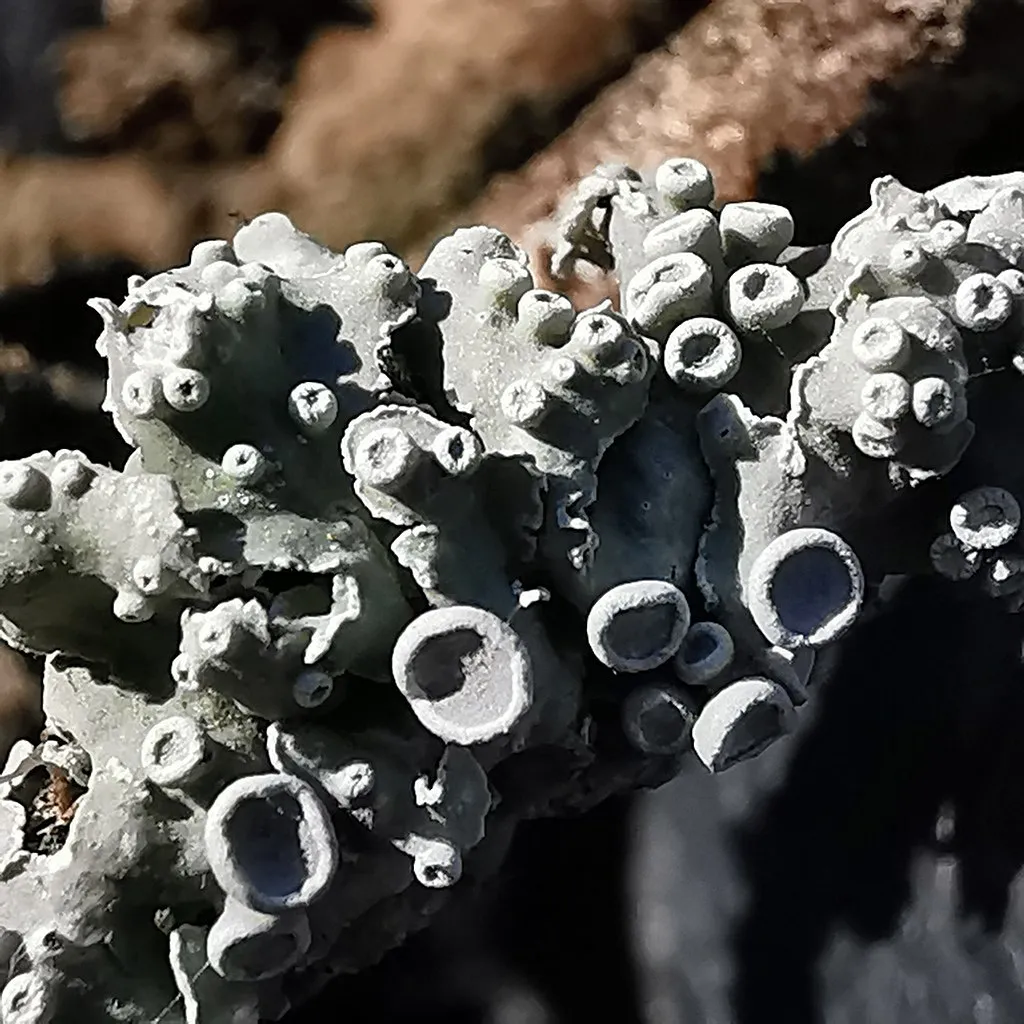
Black-spot is pale green or bluish grey with a loosely folded and encrusting rosette up to 6cm across. Spotted liberally with grey-dusted blackberry-jam-tart apothecia, 2–3cm in diameter. It grows on tree trunks, branches, logs and stumps throughout the British Isles.
5. Handwriting lichen (Graphis scripta)

Large, pale-green or cream encrustations. It is smooth, but etched all over with small, regularly spaced black hieroglyph-like marks (slit apothecia) that are wrinkled, curved and often branching. Under a lens, the margins seem to be raised, lip-like. Found on tree bark, especially in partial shade, throughout the British Isles.
6. Cup lichen (Cladonia fimbriata)
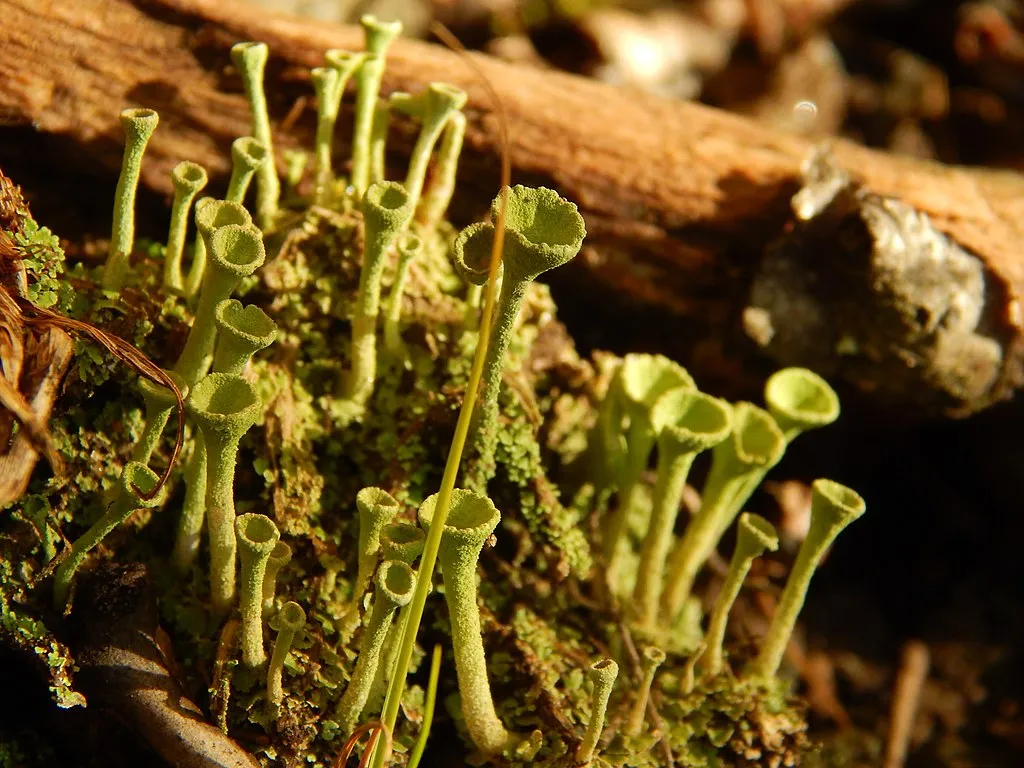
The cup lichen has an irregular, overlapping, pale-green leaf-like thallus forming dense mats from which trumpet-shaped fruiting bodies (30–40mm high) erupt. It is found growing on the ground and on tree roots and logs throughout the British Isles. One of the most commonly collected lichens.
7. Leaf lichen (Peltigera membranacea)
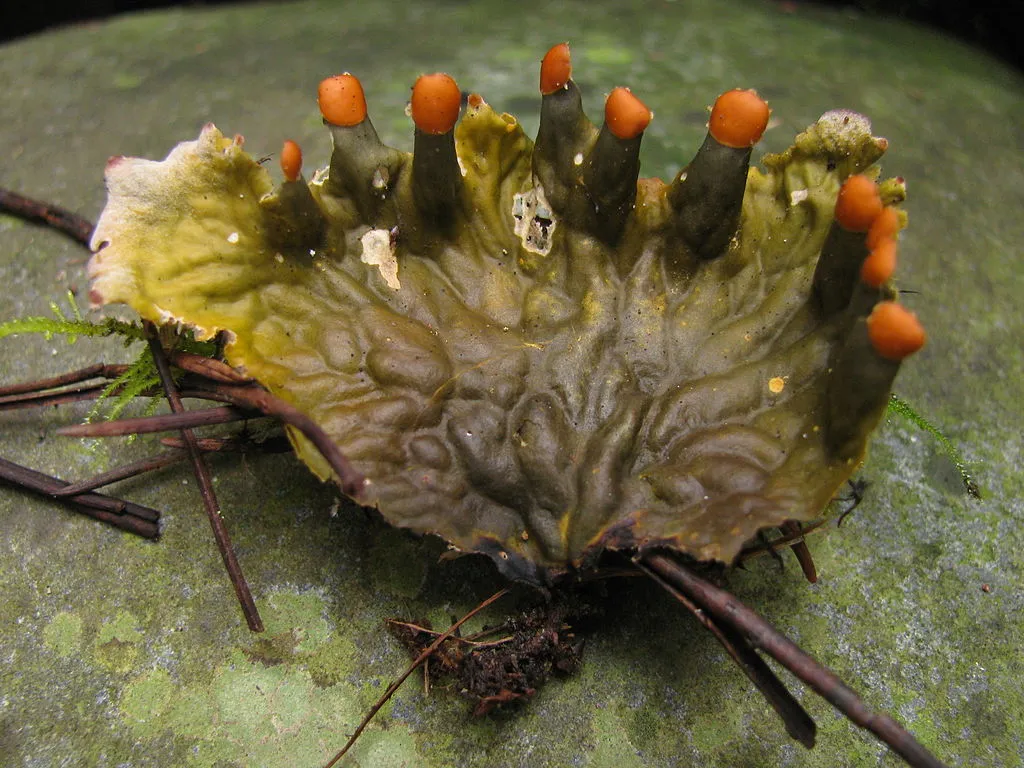
Large, folded, pale grey-brown body of thin but broad leaf-shaped bracts forming large clusters to 40cm across. The undersides are ribbed with branching vein-like ridges. Its fruiting trumpets with grey stalks are tipped bright orange like damp matches. Widespread across the British Isles, especially in the west and north.
Want to learn more? Check out the British Lichen Society.
Main image: The texture or background of the old stone surface covered with the lichen and moss. The picture is much alike the geographical map./Credit: Getty
